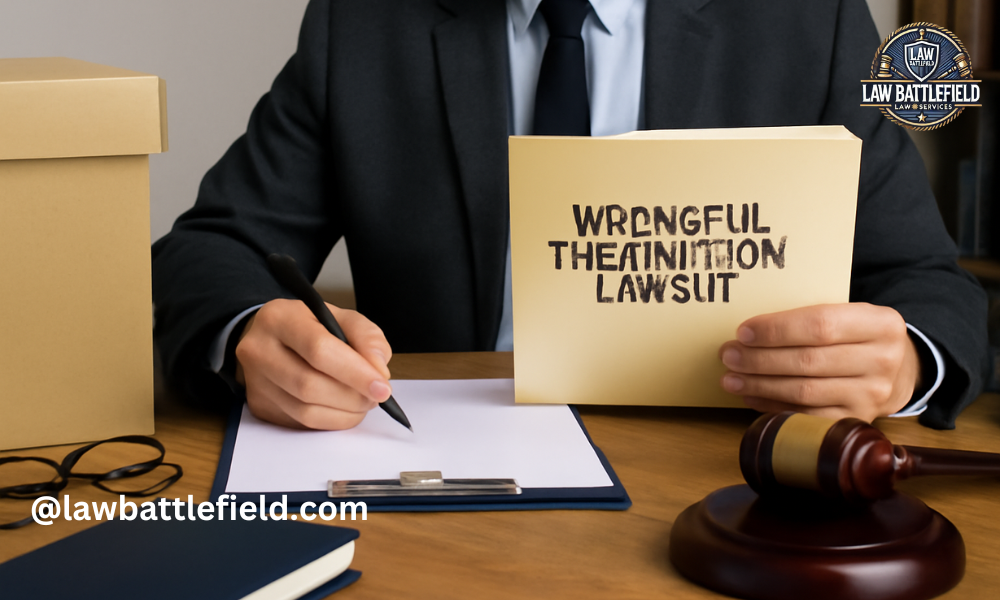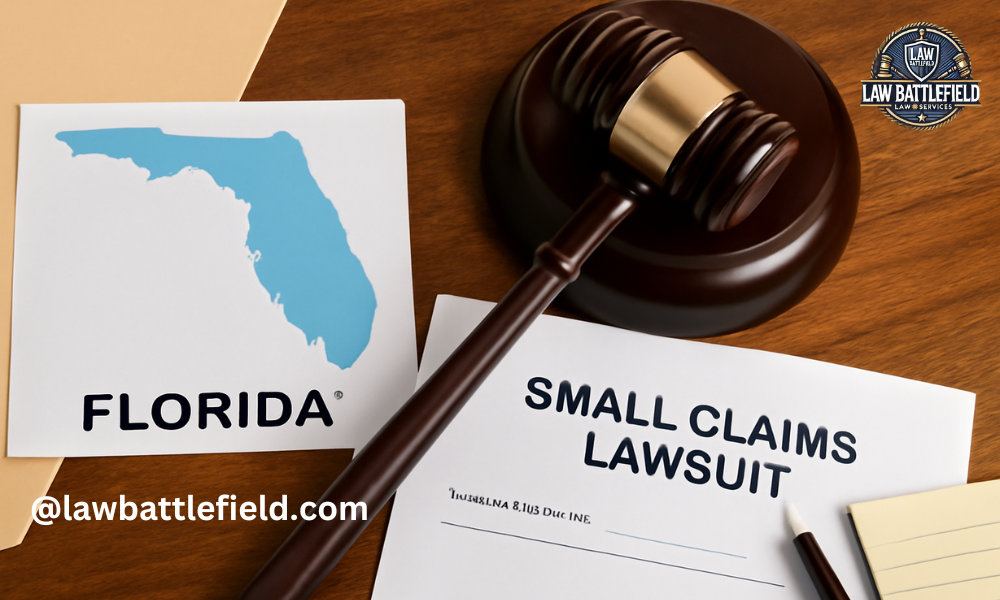Wrongful termination occurs when an employee is fired for reasons that are against the law or violate the terms of their employment agreement. It can happen because of discrimination, retaliation, or a breach of contract — all of which go against workplace rights and legal protections.
When this occurs, many employees decide to take legal action to defend their rights and seek fair compensation. This guide explains how to file a wrongful termination lawsuit, step by step — from recognizing an unlawful dismissal to understanding how to start the legal process.
By following these steps, you can protect your rights, build a strong case, and move forward with confidence.
Recognising Whether Your Dismissal Qualifies As Wrongful
Finding out you’ve been fired can be confusing, but not every dismissal counts as wrongful termination. To know where you stand, it’s important to look at why you were let go and whether your employer broke any laws or agreements.
What Counts as Wrongful Termination
A termination becomes wrongful when it happens for illegal reasons or violates the terms of your employment contract. This could mean being dismissed for discrimination, retaliation, or an employer ignoring promises made in a signed agreement.
Even in “At-Will” Employment States
In many places, employers can fire workers at any time without giving a reason. But this freedom has limits — firing someone because of discrimination, retaliation, or for using their legal rights is still unlawful.
Common Grounds for Wrongful Termination
- Discrimination: Fired because of race, gender, age, disability, religion, or pregnancy.
- Retaliation: Let go after reporting harassment, unsafe conditions, or illegal activity.
- Contract Violation: Employer breaks written or verbal job terms.
- Legal Leave: Dismissed for taking medical, family, or other protected leave.
When It’s Not Wrongful
Sometimes a firing feels unfair, but that alone doesn’t make it illegal. If you were let go due to company downsizing, restructuring, or poor performance — and no rights were violated — then it’s not considered wrongful termination.
Gathering and Preserving Evidence to Support Your Claim
Building a strong wrongful termination case starts with solid evidence. Without proof, it’s difficult to show that your firing was unlawful or unfair. Collecting and keeping the right documents can make your claim more credible and convincing in front of a lawyer or court.
Documents You Should Collect
Gather every file, record, or message connected to your job and termination. These can include:
- Your employment contract or company handbook showing policies and promises.
- The termination notice or any written explanation for your dismissal.
- Emails, letters, or text messages exchanged with your employer or manager.
- Performance reviews or written feedback that show your work history.
Extra Proof That Strengthens Your Case
Save anything that helps prove your side of the story, such as:
- Witness statements from coworkers who saw unfair behavior.
- Records of complaints you made about discrimination or unsafe conditions.
- Proof of legal leave (like FMLA or medical leave) and related communication.
- Pay stubs and benefits records showing what you lost due to the firing.
Why This Step Is Important
Strong evidence builds trust and gives your claim power. It shows clear facts instead of opinions, making it easier for your lawyer or the court to understand what really happened. The more organized and detailed your evidence is, the stronger your wrongful termination lawsuit will be.
Filing Administrative Complaints And Understanding Time Limits
Before taking your employer to court, most wrongful termination cases — especially those involving discrimination or retaliation — require filing a complaint with a government agency first. This is an important legal step that must be done correctly and on time to move your case forward.
Where To File The Complaint
If you believe your termination was linked to discrimination, you need to contact the Equal Employment Opportunity Commission (EEOC) in the United States. The EEOC reviews cases related to race, gender, age, disability, religion, or retaliation. Some states also have local fair employment agencies that handle similar complaints.
Important Time Limits You Must Know
Timing is critical.
- In most cases, you have 180 days from the date of termination to file your complaint with the EEOC.
- Some states extend this deadline to 300 days, depending on local laws.
- Missing these deadlines can cause you to lose your right to file a lawsuit later.
Why It Matters
Submitting a timely and complete complaint shows that you’re following the proper legal process. Once the EEOC reviews your case, they may issue a “Right to Sue” letter — this document allows you to officially move forward with your wrongful termination lawsuit in court.
Consulting An Employment Law Attorney
Handling a wrongful termination case on your own can be stressful and confusing. A lawyer who focuses on employment law understands how these cases work and can guide you at every step. Speaking with one early can save you time, money, and mistakes.
Why You Should Meet A Lawyer
An experienced attorney can:
- Review your situation and tell you if your firing was unlawful.
- Explain your legal options and help plan your next move.
- Handle all paperwork and communication with agencies or the court.
- Protect you from signing documents that could weaken your claim.
What To Ask During The Consultation
When meeting your lawyer, discuss:
- Fees and payment structure — some work on contingency, meaning you pay only if you win.
- Chances of success based on your evidence and the laws in your state.
- Documents you need, such as emails, contracts, or witness statements.
- Settlement vs. trial — understand what each path involves before deciding.
How A Lawyer Helps Your Case
A lawyer not only explains how to file a wrongful termination lawsuit but also makes sure every legal rule and deadline is met. They can negotiate with your employer, prepare your complaint, and represent you in court if needed. Having a skilled attorney gives your claim structure, credibility, and a higher chance of success.
Initiating The Formal Lawsuit
Once all required administrative steps are complete and you’ve received a Right to Sue letter (if needed), your attorney can begin the official court process. This stage turns your claim into a formal wrongful termination lawsuit, where your case is presented before a judge or jury.
Filing The Complaint
Your attorney prepares and files a legal complaint in court. This document explains:
- Why your firing was unlawful.
- The damages or compensation you’re seeking.
- The evidence and facts that support your case.
After filing, your employer (the defendant) will receive the complaint and must submit an official response — either accepting, denying, or defending against your claims.
Discovery And Legal Motions
Once both sides have shared their initial documents, the case enters the discovery phase. This is where:
- Each side gathers more evidence through documents, emails, and witness statements.
- Depositions may be taken, where both parties answer questions under oath.
- Lawyers can file motions, such as requests to dismiss the case or limit certain evidence.
Settlement And Trial Possibilities
Many wrongful termination lawsuits end in settlement before trial. Your lawyer and the employer’s legal team may negotiate to reach a fair agreement on compensation without going to court.
If no agreement is reached, the case moves to trial, where both sides present their evidence to a judge or jury.
Time And Complexity
This stage can be lengthy and complicated, often taking several months or even years. Patience and cooperation with your attorney are key, as each step helps strengthen your case and improve your chance for justice.
Understanding Potential Outcomes And Remedies
When you file a wrongful termination lawsuit, it’s important to know what results you can expect. The outcome depends on your case details, the strength of your evidence, and how your employer responds.
Types Of Compensation You Can Claim
If the court or a settlement decides in your favor, you may receive:
- Lost wages for the time you were unemployed.
- Lost benefits, such as health insurance or retirement contributions.
- Emotional distress damages for the stress and hardship caused by the firing.
- Reinstatement, which means getting your job back in certain cases.
- Legal fees if the court orders your employer to cover your attorney costs.
These remedies aim to make up for both financial loss and emotional harm.
Settlement vs. Verdict
Most wrongful termination cases end through settlement, where both sides agree on an amount before trial. Settlements are usually faster, private, and less stressful.
If your case goes to trial, a judge or jury decides whether your firing was illegal and how much compensation you deserve. Trials can lead to higher rewards, but they also take longer and involve more risk.
No Fixed Payout — Every Case Is Different
There’s no set amount for a wrongful termination case. The result depends on:
- The strength of your evidence.
- The employer’s size and resources.
- The laws in your state.
- How convincing your attorney’s arguments are.
Strong preparation and credible proof give you the best chance of receiving fair compensation for what you’ve lost.
Key Challenges And Pitfalls To Watch Out For
Filing a wrongful termination lawsuit can be a strong way to defend your rights, but it’s not always simple. There are many hurdles that can make your case harder if you’re not careful or well-prepared.
Proving The Employer’s Real Motive
One of the biggest challenges is showing why you were fired. Employers often claim an “at-will” reason — meaning they can terminate anyone at any time. To win, you must prove that the real reason was illegal, such as discrimination or retaliation. That’s why collecting solid evidence, documents, and witness statements is so important.
Meeting Legal Deadlines
Every case has strict filing deadlines. Missing even one can end your chance to take legal action. Filing your complaint with the EEOC or court on time protects your right to continue the case. Always keep track of dates and paperwork with your lawyer’s help.
Being Careful With Severance Agreements
After termination, some employers offer a severance package or release form in exchange for payment. These agreements can sometimes include hidden clauses that waive your right to sue later. Never sign anything until an employment lawyer reviews it.
Costs And Emotional Strain
Lawsuits can take months or even years to finish. They may involve legal fees, stress, and emotional pressure. It’s wise to stay patient and understand that not every dismissal qualifies as wrongful — some firings are legal even if they feel unfair.
Conclusion
Filing a wrongful termination lawsuit is possible when you prepare carefully and take the right steps from the start. The process requires understanding your rights, collecting strong evidence, and following all legal rules on time. Knowing how to file a wrongful termination lawsuit helps you move forward with confidence and ensures your case is handled the proper way.
If you believe your dismissal was unfair or unlawful, act quickly — deadlines matter. Gather your documents, speak with an experienced employment lawyer, and protect your rights before valuable time passes.
Remember, if you think you were wrongfully terminated, you do have options — and it all begins with the right first step.
FAQs
What Is Considered Wrongful Termination?
Wrongful termination happens when an employee is fired for illegal reasons — such as discrimination, retaliation, or breach of contract — that violate labor laws or employment agreements.
Can I Sue My Employer If I Was Fired Unfairly?
Yes, but only if the firing broke a law or contract. Being treated unfairly doesn’t always mean your termination was wrongful unless a legal right was violated.
How Long Do I Have To File A Wrongful Termination Claim?
In most cases, you must file a complaint with the EEOC within 180 days of your termination. Some states allow up to 300 days, depending on local laws.
Do I Need A Lawyer To File A Wrongful Termination Lawsuit?
It’s strongly recommended. An employment lawyer can explain your rights, handle all filings, and guide you through each step to improve your chance of success.
What Kind Of Compensation Can I Receive?
You may be eligible for lost wages, lost benefits, emotional distress damages, and sometimes reinstatement to your former position.
How Long Does The Process Take?
Every case is different. Some are settled in a few months, while others go to court and take a year or more. Patience and proper legal support are key.
Was this article helpful? Check out more on Lawbattlefield.com
Disclaimer: This article is for general informational purposes only and should not be taken as legal advice. Laws about employment and wrongful termination can vary by state and situation. If you believe you were wrongfully terminated or are thinking about taking legal action, you should consult a qualified employment law attorney for guidance specific to your case. TruLife Distribution and the author make no guarantees about legal outcomes or compensation results. All examples are for educational use only, and timelines, procedures, or remedies may differ based on your local regulations and the facts of your case.





